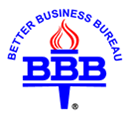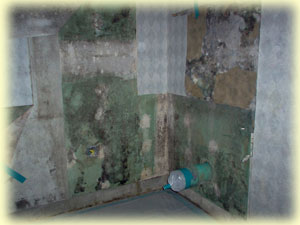|
At TECI we have years of experience in water damage restoration. When damage of this type occurs, experience and quick respose is critical to prevent mold and other damage. Please call our office for a quote. While TECI is not currently a state licensed mold remediation contractor, the following mold remediation questions and answers are provided for your benefit. Frequently Asked Questions About Mold and Mold RemediationWhat are molds?How do molds grow? How can I be exposed to mold? How can molds affect my health? How do I know if I have a mold problem? How can I control mold growth? Can mold cause health problems? How do I get rid of mold? How does mold get into a building? Are there harmful and non-harmful molds? Does mold affect everyone the same way? How much mold exposure is harmful? Can mold exposure cause brain damage or death? Does tighter building construction promote mold development? Do new building materials (e.g. drywall or paper faced gypsum board) promote mold growth? Are there reliable tests to indicate the presence of mold? If mold is present, what’s the best way to get rid of it? Is it possible to completely eliminate mold from the inside of a home or office building? Should I use bleach to get rid of mold? How do I know when the mold clean up is finished? When is mold considered toxic? When should I evacuate because of mold? Does the type of mold determine the clean up plan? Is mold growth on roof sheathing in my attic a problem? How can I tell if remediation (cleaning) has been effective? How do you test for mold? How many samples are necessary to find a mold problem? Why are outdoor mold counts important? What is an acceptable level of mold in surface dust? What are appropriate control methods for mold remediation? How should I handle carpet, drywall and other porous materials that got wet? How can settled spores be removed from porous items? Do ozone generators work for mold? I had a consultant test my home for mold, what do the results mean? How much mold is too much? Is it important to know what type of mold is present? Is there a “killer mold”? I’ve been feeling sick lately. Is it from mold? What is causing the mold growth in my home? Will painting over mold solve the problem? Where can I find a “licensed” mold remediator? What are mycotoxins? What does mold look like? What are molds?With more than 100,000 species in the world, it is no wonder molds can be found everywhere. Neither animal nor plant, molds are microscopic organisms that produce enzymes to digest organic matter and spores to reproduce. These organisms are part of the fungi kingdom, a realm shared with mushrooms, yeast, and mildews. In nature, mold plays a key role in the decomposition of leaves, wood, and other plant debris. Without mold, we would find ourselves wading neck-deep in dead plant matter. And we wouldn't have great foods and medicines, such as cheese and penicillin. However, problems arise when mold starts digesting organic materials we don't want them to, like our homes. How do molds grow?Once mold spores settle, they need moisture to begin growing and digesting whatever they are growing on. There are molds that can grow on wood, ceiling tiles, wallpaper, paints, carpet, sheet rock, and insulation. When excess moisture or water builds up from say, a leaky roof, high humidity, or flooding, conditions are often ideal for molds. Longstanding moisture or high humidity conditions and mold growth go together. Realistically, there is no way to rid all mold and mold spores; the way to control mold growth is to control moisture. 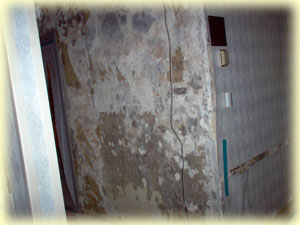
How can I be exposed to mold?When molds are disturbed, their spores may be released into the air. You then can be exposed to the spores through the air you breathe. Also, if you directly handle moldy materials, you can be exposed to mold and mold spores through contact with your skin. Eating moldy foods or hand-to-mouth contact after handling moldy materials is yet another way you may be exposed. How can molds affect my health?Generally, the majority of common molds are not a concern to someone who is healthy. However if you have allergies or asthma, you may be sensitive to molds. You may experience skin rash, running nose, eye irritation, cough, congestion, and aggravation of asthma. Also if you have an immune suppression or underlying lung disease, you may be at increased risk for infections from molds. When necessary, some resourceful molds produce toxins in defense against other molds and bacteria called mycotoxins. Depending on exposure level, these mycotoxins may cause toxic effects in people, also. Fatigue, nausea, headaches, and respiratory and eye irritation are some symptoms that may be experienced from exposure to mycotoxins. If you or your family members have health problems that you suspect are caused by exposure to mold, you should consult with your physician. How do I know if I have a mold problem?You may have seen white thread-like growths or clusters of small black specks along your damp walls, or smelled a "musty" odor. Seeing and smelling mold is a good indication that you have a mold problem. However, you cannot always rely upon your senses to locate molds. Hidden mold can be growing behind wall coverings or ceiling tiles. Common places to find mold are in areas where water has damaged building materials and furnishings perhaps from flooding or plumbing leaks. Mold can also be found growing along walls where warm moist air condenses on cooler wall surfaces, such as inside cold exterior walls, behind dressers, headboards, and in closets where articles are stored against walls. Rooms with both high water usage and humidity, such as kitchens, bathrooms, laundry rooms, and basements are often havens for mold. If you notice mold or know of water damaged areas, it is time to take action to control its growth. How can I control mold growth?Fix any moisture problems:
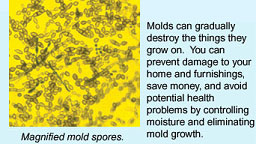
Can mold cause health problems?Molds are usually not a problem indoors, unless mold spores land on a wet or damp spot and begin growing. Molds have the potential to cause health problems. Molds produce allergens (substances that can cause allergic reactions), irritants, and in some cases, potentially toxic substances (mycotoxins). Inhaling or touching mold or mold spores may cause allergic reactions in sensitive individuals. Allergic responses include hay fever-type symptoms, such as sneezing, runny nose, red eyes, and skin rash (dermatitis). Allergic reactions to mold are common. They can be immediate or delayed. Molds can also cause asthma attacks in people with asthma who are allergic to mold. In addition, mold exposure can irritate the eyes, skin, nose, throat, and lungs of both mold-allergic and non-allergic people. Symptoms other than the allergic and irritant types are not commonly reported as a result of inhaling mold. Research on mold and health effects is ongoing. This brochure provides a brief overview; it does not describe all potential health effects related to mold exposure. For more detailed information consult a health professional. You may also wish to consult your state or local health department. 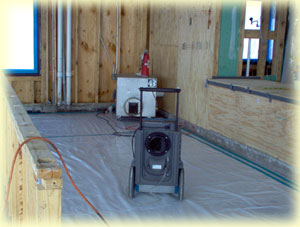
How do I get rid of mold?It is impossible to get rid of all mold and mold spores indoors; some mold spores will be found floating through the air and in house dust. The mold spores will not grow if moisture is not present. Indoor mold growth can and should be prevented or controlled by controlling moisture indoors. If there is mold growth, you must clean up the mold and fix the water problem. If you clean up the mold, but don't fix the water problem, then, most likely, the mold problem will come back. How does mold get into a building?Molds are decomposers of organic material such as wood, plants and animals. Mold and mold spores are found in high concentrations wherever there is dead matter such as a pile of leaves, manure or compost. Mold spores enter buildings through the air or on people, animals and objects that are brought into the building. Spores are small bundles of genetic material and chemicals (similar to seeds) that molds make under certain conditions. Are there harmful and non-harmful molds?There are only a few molds that can cause infection in healthy humans. Some molds cause infections only in people with compromised immune systems. The biggest health problem from exposure to mold is allergy and asthma in susceptible people. There are more than 100,000 types of mold. Good information has been developed for only a small number of these molds - at least in terms of their effects on human health. Most people tolerate exposure to moderate levels of many different molds without any apparent adverse health effects. Some molds produce powerful chemicals called “mycotoxins” that can produce illness in animals and people. Scientific knowledge about the health effects of these toxins on humans is quite limited. Does mold affect everyone the same way?No. Some individuals have a genetic makeup that puts them at risk for developing allergies to mold. People, who have an allergy to mold, especially if they also have asthma, can become ill from exposure to a small amount of mold. Individuals also seem to be quite different in their response to exposure to the toxic chemicals that some molds release. These differences between individuals contribute to the difficult question of determining safe exposure limits for mold. How much mold exposure is harmful?No one knows the answer to this question for several reasons. Individuals are very different with respect to the amount of mold exposure they can tolerate. Children under the age of one year may be more susceptible to the effects of some molds than older individuals. Measuring or estimating “exposure” levels is very difficult. “Exposure” means the amount of mold (microscopic spores and mold fragments) that gets into a person usually by breathing, but also by eating or absorption through the skin. For example, a building may have a lot of mold in the walls but very little of that mold is getting into the air stream. In that case the people working or living in that building would have little mold exposure. 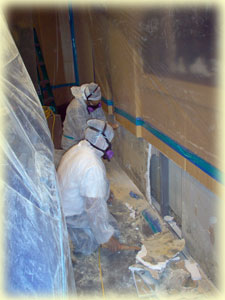
Can mold exposure cause brain damage or death?Although some “experts” claim that individuals have brain damage or have died because of exposure to mold and especially mold toxins, there is no good science at this time to support these claims. Consequently it is prudent to minimize one’s exposure to really moldy environments. By “really moldy” we mean where there are large visible areas of mold (more than a few square feet) or the building has a “musty” odor because of hidden mold growth. There are many epidemiological studies showing that people who live in houses with dampness have many more health problems, especially respiratory, than do people who live in dry houses. This association does not “prove” that it is the mold that is responsible for the increase in illness. However, it does support the assertion that it is not wise to live in damp, moldy buildings. Does tighter building construction promote mold development?Tighter building construction does not by itself promote mold growth, but tight construction combined with some poor choices in design, building materials or operations can increase the probability of mold growth. What do we mean? The tighter the building construction the less air exchange there is between the inside air and the outside air. Whatever gets into the inside air stays there longer than it would in a structure with loose construction. Moisture that gets into the air from activities such as cooking, bathing and even breathing will remain in a tight structure longer than it would in a loose structure. That’s why exhaust fans should be installed in bathrooms and kitchens and vented to the outside. Clothes dryers should also be vented to the outside. Tight construction permits control of the air exchange between the inside and the outside and can prevent the deposition of moisture in walls and roofs. Controlling moisture, including indoor relative humidity is the key to preventing mold growth. Tight building construction when combined with source control of moisture (exhaust fans) and controlled ventilation (intentional introduction of outside air) reduces the probability of mold growth in a building. Controlled ventilation can be provided by a duct that brings outside air to the return side of the air handler of a forced air system. A timing device or fan cycler can be programmed to have the air handler turn on for a specified number of minutes each hour even when there is no call for heating or cooling. In cold climates controlled ventilation is frequently provided by a heat recovery ventilator (HRV). Do new building materials (e.g. drywall or paper faced gypsum board) promote mold growth?Mold needs water, a nutrient source, oxygen and favorable temperature to grow. Many species of mold love paper faced gypsum board. Why? Making paper involves the mechanical and chemical processing of wood. Paper is largely pre-digested so it is easy for mold to get nutrients from the paper. But unless there is enough moisture present mold can’t grow on the paper. If paper faced gypsum board is kept dry, it can be used and still not have mold. This material is kept dry by controlling the interior relative humidity, keeping rain from entering roofs and walls, and NOT using paper faced gypsum in areas that are likely to get wet. This means no paper faced gypsum board in shower and tub areas. Cement board, mortar or non-paper faced gypsum can safely be used in these damp areas because these products do not contain nutrients to support mold growth. Are there reliable tests to indicate the presence of mold?Almost all of us already have two effective mold detectors: our eyes and our noses. If black or green discoloration is noticed that is fuzzy in appearance and is in a location that is damp or had been damp, it is almost certainly mold. If a building smells musty, there probably is mold somewhere; the mold may be on stored boxes or in walls or in the crawl space. If you want to find mold, look for the presence of water or a location where water was likely to have been. If there is still any question about whether the black stuff is mold, have a reliable laboratory examine the material. All you need to know is whether mold is seen when the material is examined under the microscope. An increasing number of companies are offering “air testing for mold.” On the surface this seems like a reasonable thing to do. The problem, however, is that the results of most air sampling for mold are meaningless for two reasons. Air sampling for mold was not developed to determine if an environment was safe or had a dangerous level of mold in the air. Air sampling was developed to help identify the location of a hidden reservoir of mold. If the source of mold is already identified, air sampling does not provide additional meaningful information. Furthermore, safe or toxic levels of air borne mold have not been established. An individual air sample for mold provides a “snapshot” of what was in the air during the few minutes of sampling. The results may not be indicative of the amount of mold that is in the air during most of the day. Air sampling for mold should be done either to obtain an answer to a question that cannot be answered without the air sampling or to obtain data as part of a research project. The Center for Disease Control (CDC), the U.S. Environmental Protection Agency (EPA) and the American Conference of Governmental Industrial Hygienists do not recommend routine air testing for mold. If mold is present, what’s the best way to get rid of it?The answer depends on how much mold is present and where it is located. If the mold is on furnishings or boxes simply discard the materials. Moldy materials are not considered hazardous waste; they can be sent to a regular landfill. However, it is smart to seal the mold material in heavy plastic to protect the people who handle it in transit and prevent spreading large amounts of the mold into the building as you carry the material out of it. If the mold is on a hard surface but occupies less than 10 square feet wash the area with soapy water (scrubbing with a brush may be necessary), rinse and allow the area to dry before repainting. If you have asthma, severe allergies and a weaken immune system get someone else to do the clean up. Larger areas (greater than 10 square feet in area) should be cleaned by someone with experience in doing this type of work. Remember, determine what caused the moisture problem and correct that problem. Otherwise, mold is likely to recur. 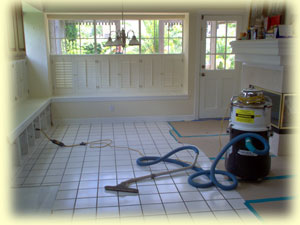
Is it possible to completely eliminate mold from the inside of a home or office building?The answer depends upon what is meant by “completely eliminate mold.” To keep a building completely free of mold spores requires very efficient air filtration and is only accomplished in special situations such as hospital operating rooms and manufacturing “clean rooms.” Remember, mold spores are in the outside air virtually all the time and some of them will get inside buildings. However, it is possible to keep mold from growing inside a building. Moisture control is the key to controlling mold in interior spaces. Air filtration can contribute to lowering mold spores in the air but is secondary to moisture control. Should I use bleach to get rid of mold?No. Although bleach will kill and decolorize mold, it does not remove mold. Dead mold can still cause allergic reactions. It is not necessary to kill mold to remove mold. Soap and water and scrubbing can remove mold from hard surfaces. The Environmental Protection Agency (EPA), the Center for Disease Control (CDC) and the New York City Health Department agree that bleach or other biocides should not routinely be used to clean up mold. However, bleach can and is used to clean the surface from which the mold was removed. How do I know when the mold clean up is finished?The mold cleanup is finished when there is no visible mold remaining and there is no dust or dirt remaining that could contain large amounts of mold and mold spores. Routine clearance testing for mold is not necessary. Leaving a few mold spores behind is not a problem if the underlying moisture problem has been corrected. Remember that mold spores are virtually everywhere. Even if all mold and mold spores are removed as part of the cleanup, spores from outside will re-enter that space. The spores won’t be able to grow unless water is also present. When is mold considered toxic?The term "toxic mold" is misleading. Molds may produce substances called mycotoxins that modify their environment. Some of these substances are useful as antibiotics; but others are potentially harmful, especially if eaten. However, there is little evidence that breathing mycotoxins in mold-contaminated buildings represents a health hazard. The American College of Occupational and Environmental Medicine states, "Current scientific evidence does not support the proposition that human health has been adversely affected by inhaled mycotoxins in the home, school, or office environment." One mold, Stachybotrys, is frequently singled out. Initially thought related to cases of a lung disease called idiopathic pulmonary hemosiderosis among infants, the U.S. Centers for Disease Control has stated, "In a further review of our first investigation, CDC reviewers and an external panel of experts determined that there was insufficient evidence of any association between exposure to Stachybotrys or other toxic fungi and idiopathic pulmonary hemosiderosis in infants." Current guidance of federal and professional organizations is that mold growth should be controlled in an appropriate manner, regardless of the type of mold. When should I evacuate because of mold?Evacuation in response to mold should be rare. There is no established level of airborne mold that is accepted as unsafe for the general population. Those cases where evacuation may be warranted include spaces undergoing mold removal activity, and spaces that are occupied by sensitive populations, such as infants, elderly, the immune-suppressed, and those with medically confirmed symptoms related to mold exposure. It is generally recommended that exposure to mold indoors be minimized. However, it must be accepted that mold exposure is inevitable in the world in which we live. We are exposed to many of the same mold species indoors as well as outdoors. Ultimately the decision to vacate a space should rest with the individual occupant, parent or guardian and be based on the amount of exposure, individual sensitivity and the advice of a medical doctor. Communication from building owners to all occupants is very important to arriving at appropriate decisions. Does the type of mold determine the clean up plan?No. The current guidance from federal agencies and professional organizations is that mold growth in indoor environments should be controlled in a proper manner regardless of the type of mold. Is mold growth on roof sheathing in my attic a problem?It is not uncommon to find mold on the underside of roof sheathing. Usually this is the result of insufficient venting, such as venting bathroom or laundry exhaust into the attic and/or insufficient peak or soffit vents. Moisture-laden warm air that enters the attic rises, contacts the cold sheathing and condenses. If this happens often enough it can affect the structural integrity of the roof through warping or rot. Although it may be possible for mold-contaminated attic air to enter the house in some cases, the function and integrity of the roof should be the greater concern. Consult with a home energy or roofing specialist on a proper ventilation strategy. How can I tell if remediation (cleaning) has been effective?The source of moisture responsible for the mold growth must have been corrected. No visible mold or related odors should remain in the work area. There should also be no debris present. For projects where extensive mold growth was identified, work should have been done under containment conditions (a plastic enclosure under negative pressure evident by the inward movement of plastic walls). The work area should have been thoroughly cleaned using wet methods such as wet wiping with a detergent solution and by vacuuming with a HEPA vacuum. Sampling is generally not recommended due to the high variability inherent in mold levels. Does the type of mold determine the clean up plan?No. The current guidance from federal agencies and professional organizations is that mold growth in indoor environments should be controlled in a proper manner regardless of the type of mold. How do you test for mold?While testing can be useful in some cases such as for conducting health-related research or investigating fungal species-specific health effects, deciding what to do about mold should be based primarily on visual assessment, knowledge of the building structure, and the history of water damage in the building. There are many methods of assessing mold exposures; all of them have limitations. Further, mold levels within a structure are highly variable and large sample number is required to obtain meaningful data. Some research suggests that there may be less variability in data for components of microbiological cell walls, than for entire organisms, but questions regarding how well such data correspond to true exposure remain. 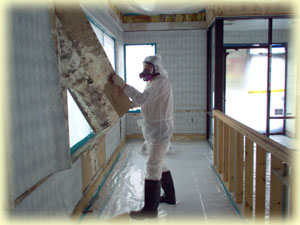
How many samples are necessary to find a mold problem?The proper number and location of air samples is often a matter of debate and depends on the questions to be answered, strength of desired conclusions and on cost. Mold levels vary greatly with season, temperature, humidity and time of day. This variability requires that multiple samples be collected at each location to be sure the observed difference is real and not just due to chance. A report recently released by the National Academy of Sciences addresses the difficulties associated with sampling. "Thus, because only sparse data are available on variation of exposure to biologic agents in the home environment, it is not possible to recommend how many samples should be taken to produce an accurate assessment of the risk-relevant exposure. However, there is a strong suggestion that airborne concentrations are characterized by high variability over time, an indication that one sample per home is unlikely to be sufficient even when acute health effects are being considered, because variations in exposure occur over very short periods." Sampling plans, when used, should be designed by an experienced professional to answer specific questions. The design should be statistically robust and the goals and strength of the plan should be adequately defended prior to proceeding Why are outdoor mold counts important?In most instances, indoor mold levels will closely parallel outdoor levels, both in type and amount. In naturally ventilated buildings such as many homes, air from the outside enters the building whenever the windows or doors are open. Mold is present outdoors and can enter buildings in many ways, such as when windows and doors are open and people are entering and leaving. Depending on the effectiveness of the building air cleaning devices, outdoor fungi can be removed somewhat from the air stream. The extent to which such a reduction occurs depends on the efficiency of the filtration system and how "open" the building is to the outdoors. Outdoor counts will vary greatly and may in turn cause similar variation in indoor levels. Because of this variability, it can be difficult to differentiate true difference between outdoor and indoor samples without taking a large number of samples. Soil and plant materials are major sources of airborne mold. Studies indicate that outdoor fungal levels vary greatly by region, season, weather conditions, and air movement. According to data published by the American Academy of Asthma, Allergy and Immunology (www.aaaai.org) (exit DHFS) outdoor mold counts for major U.S. cities regularly exceed 10,000 spores per cubic meter of air during much of the year. What is an acceptable level of mold in surface dust?Surface or bulk material sampling is often used to determine if mold is present on surfaces or materials such as carpeting and textiles. However, this may not always be necessary. Often, HEPA vacuuming or laundering may be sufficient to clean surfaces where mold spores had accumulated. When mold growth occurs on the surface, professional cleaning or replacement may be required. Methods of sampling surfaces include tape samples (or tape-lift samples), swab samples, and vacuum samples. As with air samples, guidelines have been offered to help define "normal" levels of mold particles in surface dust. However, these numbers can be misleading and care must be exercised in the interpretation of sample data. The weight of the sample can also affect the result obtained. In addition to mold per unit weight and mold per unit area, total dust per unit area should also be recorded. Perhaps of greatest importance is evaluation of the microbial flora reported in the sample data. This can provide insight into the moisture conditions of the building. A mycologist may be consulted for assistance with data interpretation. What are appropriate control methods for mold remediation?There are a number of options available to clean up a mold condition, depending on the size and type of surfaces affected. Most important is the need to control dust associated with the clean-up activity. Dust should be controlled using damp cleaning methods and by using HEPA vacuuming. HEPA refers to High Efficiency Particulate Air meaning that the vacuum filter is capable of removing particles that are 0.3 um (micron: one millionth of a meter) in diameter at 99.97% efficiency. Typical vacuum filters will not capture spores as efficiently and may further disperse them in air. When the size of the area with visible mold growth is large or when sensitive people (defined above) are nearby, containing the work area in a plastic enclosure is appropriate. The air inside the enclosure should be actively exhausted to the outdoors by placing the enclosed environment under negative pressure with respect to the rest of the room or building. This means if there are any leaks in the enclosure, that air will move from the cleaner areas outside the enclosure into the enclosure, and minimize air movement in the opposite direction. 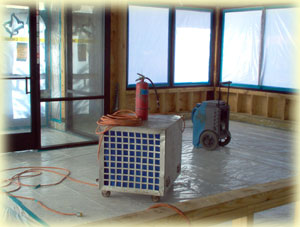
How should I handle carpet, drywall and other porous materials that got wet?When porous items such as drywall and carpet get wet, they should be dried within 48 hours or discarded. Porous items or surfaces are those that can soak up water easily. They include drywall, clothing, textiles, upholstered furniture, leather, paper goods, and many types of artwork or decorative items. Many soft materials can be a food source for mold. When these materials soak up water, moisture can be retained for extended periods increasing the potential for mold growth. Foam carpet pads can retain moisture long enough to support mold growth. In addition to flooding, extended periods of high interior humidity can lead to mold growth. This is sometimes indicated by a musty odor. If sewage or gray water is involved, the materials should be discarded. How can settled spores be removed from porous items?In environments where the porous materials have not been wet, but there has been extensive visible mold growth on nearby building surfaces, removing settled mold spores is possible using various cleaning methods. HEPA vacuuming is a good method to consider. If the materials show visible mold growth or are subjected to high humidity for extended periods, cleaning is much less effective. Unless the item has high value, disposal is often the most cost-effective solution. Do ozone generators work for mold?Ozone generators are not recommended for mold control. Ozone is a reactive form of oxygen that is toxic to living cells. Ozone levels sufficient to kill microorganisms are predictably irritating to the eyes, nose, throat and lungs and can aggravate asthma. In some cases where ozone has been used for mold control, reported levels were high enough to present a serious health hazard in occupied spaces. While ozone can kill microorganisms, it does not remove allergens from air, even if they are dead. Ozone generators or other types of air cleaning devices do not address the underlying reasons why mold is growing on building materials or other articles in your home. If there is visible mold growth, it should be properly cleaned up or the affected materials should be removed. Many ozone-generating devices are aggressively marketed for improving indoor air quality. For more information about ozone, air cleaners and indoor air quality see the USEPA website at http://www.epa.gov/iaq/pubs/ozonegen.html (exit DHFS). I had a consultant test my home for mold, what do the results mean?Testing for mold can be done through a variety of techniques such as air, surface or swab sampling to identify the presence of mold. At present there are no state or federal standards established to identify safe levels of mold. There are over 1000 different molds that have been identified indoors; however there is no consistent link between health effects and a specific level or particular species of mold. If testing for mold is done, it is critical to establish a sampling methodology to appropriately address the investigators hypothesis. This usually involves collecting a control sample (i.e. outdoors) to compare samples from the suspect area too. For example, if the molds found indoors are different from molds outdoors, or if the levels of molds are significantly higher indoors from outdoors, this may suggest a potential indoor mold problem. 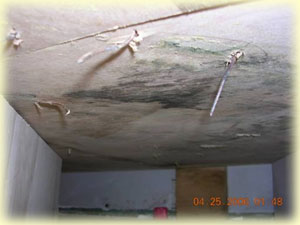
How much mold is too much?Since there is no practical method for detecting/quantifying with certainty, all molds that may cause health effects in an environment, it is safest to treat any indoor mold growth as a "potential health hazard" which needs to be corrected. Any amount or type of mold should be removed and the moisture problem that allowed its growth needs to be fixed. Is it important to know what type of mold is present?Because of the insufficient data and the very limited research on molds and its potential health effects, the precautionary position is that no visible mold growth should be tolerated in an indoor environment. Is there a “killer mold”?Indoor molds are unlikely to be life threatening. Livestock have died from eating moldy feed and fungal infections can be fatal to humans, although this is rare. There is no specific mold that creates a life threatening situation by its mere presence. Much concern was raised about the mold species Stachybotrys chartarum because it was found in homes of infants with an unusual “bleeding lung disease” in the Cleveland, Ohio area. Stachybotrys was labeled by the media as a “killer” mold because some of these infants died. Recently however, the Centers for Disease Control (CDC) and other experts reviewed the investigations of the Cleveland case and concluded that an association between the exposures to mold and the illnesses was not proven. Despite the recent focus on Stachybotrys, many kinds of mold may affect an individual’s health. Although healthy individuals are not likely to experience severe effects from small amounts of mold growing indoors, some people are more susceptible and hence, at greater risk than most of the population. It is generally prudent to assume that some people might experience problems when mold is allowed to grow unchecked indoors and the likelihood of health effects increases as the amount of mold or the duration of exposure increases. I’ve been feeling sick lately. Is it from mold?Some people are allergic to mold and some experience asthma symptoms in the presence of mold. Certain types of infections are caused by mold such as athlete’s foot. Aspergillus fumigatus is a type of mold that is thought to cause infections (aspergilloses) in susceptible individuals for example persons with suppressed immune systems due to advanced HIV or cancer patients undergoing chemotherapy. Mold has been alleged to cause headaches, memory loss, mood swings, body aches and fever in some cases but this is not well understood. If there is visible mold growth in your home it should be removed whether or not you are having health problems. It is important to keep an open mind and consider other possible causes of illness. As with any illness, you should see a physician to try and determine the cause of the symptoms. What is causing the mold growth in my home?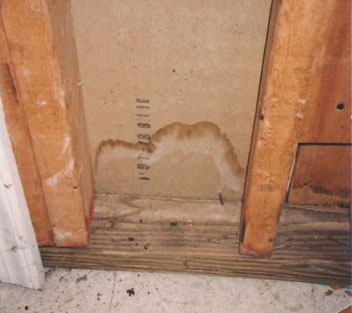 Water Stain Inside Wall Indicates a Water Leak
The best way to identify a mold problem is to conduct a visual inspection and moisture investigation to identify the moisture sources. Will painting over mold solve the problem?NO! The mold needs to be removed from the materials it is growing on with soap and water then dried thoroughly. If it is a porous material that cannot be cleaned such as drywall or particle board it needs to be removed and replaced. Where can I find a “licensed” mold remediator?Refer to http://www.dshs.state.tx.us/mold and click on Current Mold Professionals. What are mycotoxins?Many species of mold have the capability to produce metabolites as part of their growth process that are referred to as mycotoxins. The molds that are capable of producing these toxins do not do so in all situations. Therefore, just because a mold has the capability to produce a mycotoxin, does not mean that a toxin will be produced if a particular mold with the capability is present. Specific conditions, which vary among different types of mold, are required for mycotoxin production. The presence of mycotoxins does not necessarily correlate with individual exposures or health effects. As previously stated, any indoor mold growth needs to be cleaned up and the moisture problem resolved regardless of the presence of mycotoxins. What does mold look like?The following are some pictures of mold growing on various materials. These are only examples of some types of mold. 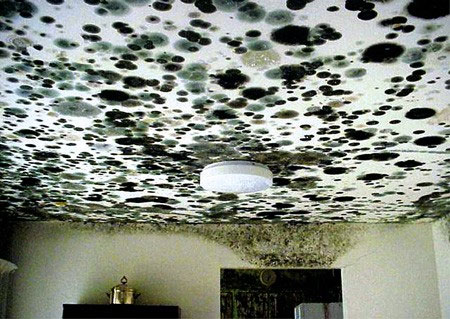 Mold On Ceiling and Walls 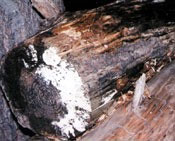 Mold On Firewood 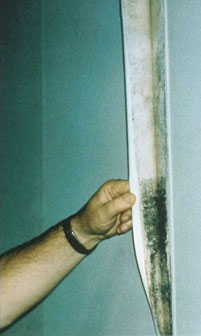 Mold on Back of Wallpaper Where can I get more information?Environmental Protection Agency Information on Mold/Moisture/Mildew. Center for Disease Control Information on Mold. Various topics on mold including information about strains. New York City Department of Health “Guidelines on Assessment and Remediation of Fungi in Indoor Environments”. A variety of informational resources regarding mold. |
|||||
|
Texas Environmental Control, Inc.
|
|||||
